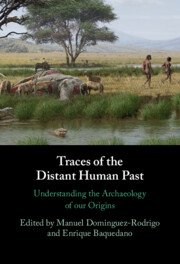Refine search
Actions for selected content:
507 results
Ancient coins in the classroom: using the OCRE imperial coin database to support Year 12 students’ learning of Roman imperial image
-
- Journal:
- Journal of Classics Teaching , First View
- Published online by Cambridge University Press:
- 23 December 2025, pp. 1-7
-
- Article
-
- You have access
- Open access
- HTML
- Export citation
Hire Ed: Job Market Dynamics for Tenure-Track Faculty Positions in Archaeology
-
- Journal:
- American Antiquity , First View
- Published online by Cambridge University Press:
- 22 December 2025, pp. 1-23
-
- Article
-
- You have access
- Open access
- HTML
- Export citation
Chapter 4 - Jewels / English Possession and the Unpossessable
- from Part II - The Treasury
-
- Book:
- The Desire for Syria in Medieval England
- Published online:
- 01 December 2025
- Print publication:
- 18 December 2025, pp 124-150
-
- Chapter
- Export citation

The North Caucasian Kingdom of Alania, 850–1240
-
- Published online:
- 17 December 2025
- Print publication:
- 21 August 2025
Different Destinations: Clarifying and Addressing Pipeline Problems for Women in Academic Archaeology
-
- Journal:
- Advances in Archaeological Practice , First View
- Published online by Cambridge University Press:
- 17 December 2025, pp. 1-18
-
- Article
-
- You have access
- Open access
- HTML
- Export citation

Traces of the Distant Human Past
- Understanding the Archaeology of our Origins
-
- Published online:
- 13 December 2025
- Print publication:
- 22 January 2026
Deep-time perspectives on drylands: Archaeology as a lens for understanding long-term livelihood systems and resilience
-
- Journal:
- Cambridge Prisms: Drylands / Volume 2 / 2025
- Published online by Cambridge University Press:
- 10 December 2025, e17
-
- Article
-
- You have access
- Open access
- HTML
- Export citation
“I Wish These Damned People Would Stay Put”: The Political Ambivalence of US Archaeologists in Guatemala, 1931–1956
-
- Journal:
- Latin American Research Review ,
- Published online by Cambridge University Press:
- 09 December 2025, pp. 1-18
-
- Article
-
- You have access
- Open access
- HTML
- Export citation

How Urbanism Changes Foodways
-
- Published online:
- 26 November 2025
- Print publication:
- 08 January 2026
-
- Element
- Export citation
The Quaternary landscapes, chronostratigraphy, and paleoenvironments of the Chalbi Desert, Kenya
-
- Journal:
- Quaternary Research , First View
- Published online by Cambridge University Press:
- 12 November 2025, pp. 1-24
-
- Article
- Export citation
People and time in nature: Positioning archaeology in an ecoclimate crisis
-
- Journal:
- Archaeological Dialogues , First View
- Published online by Cambridge University Press:
- 10 November 2025, pp. 1-18
-
- Article
-
- You have access
- Open access
- HTML
- Export citation

Cultural Property
- Law, Policy, and Markets
-
- Published online:
- 05 November 2025
- Print publication:
- 30 October 2025

The Archaeology of the Cyclades in the Roman and Late Antique Periods
- Globalization, Christianization and Resilience
-
- Published online:
- 23 October 2025
- Print publication:
- 06 November 2025
A look at intercultural archaeology from the Colombian Caribbean
-
- Journal:
- Archaeological Dialogues / Volume 31 / Issue 1 / June 2024
- Published online by Cambridge University Press:
- 23 October 2025, pp. 31-34
-
- Article
-
- You have access
- Open access
- HTML
- Export citation
New prehistoric occupations identified in the eastern Iberian Plateau
-
- Journal:
- Antiquity , First View
- Published online by Cambridge University Press:
- 23 October 2025, pp. 1-7
-
- Article
-
- You have access
- Open access
- HTML
- Export citation
The Apostle Sculptures of Yorkshire, St Wilfrid’s Episcopal Mission and his Cult: Aspects of Ecclesiastical Conflicts in Northumbria from the Late Seventh to Early Ninth Centuries
-
- Journal:
- Early Medieval England and its Neighbours / Volume 51 / 2025
- Published online by Cambridge University Press:
- 17 October 2025, e14
-
- Article
-
- You have access
- Open access
- HTML
- Export citation
SILCHESTER INSULA ix: THE EXCAVATIONS IN PERSPECTIVE
-
- Journal:
- The Antiquaries Journal , First View
- Published online by Cambridge University Press:
- 16 October 2025, pp. 1-14
-
- Article
-
- You have access
- Open access
- HTML
- Export citation
Documenting the profession: Recording historic access and retention issues for women in UK archaeology
-
- Journal:
- Archaeological Dialogues / Volume 31 / Issue 1 / June 2024
- Published online by Cambridge University Press:
- 26 September 2025, pp. 76-100
-
- Article
-
- You have access
- Open access
- HTML
- Export citation
Chapter Six - Multidisciplinary Means of Addressing Pastoral Ecologies and Economies in the Past
-
- Book:
- The Archaeology of Pastoralism, Mobility, and Society
- Published online:
- 04 September 2025
- Print publication:
- 18 September 2025, pp 258-272
-
- Chapter
- Export citation
Chapter One - From Orientalist Tropes to aDNA and Isotopes
-
- Book:
- The Archaeology of Pastoralism, Mobility, and Society
- Published online:
- 04 September 2025
- Print publication:
- 18 September 2025, pp 20-55
-
- Chapter
- Export citation
